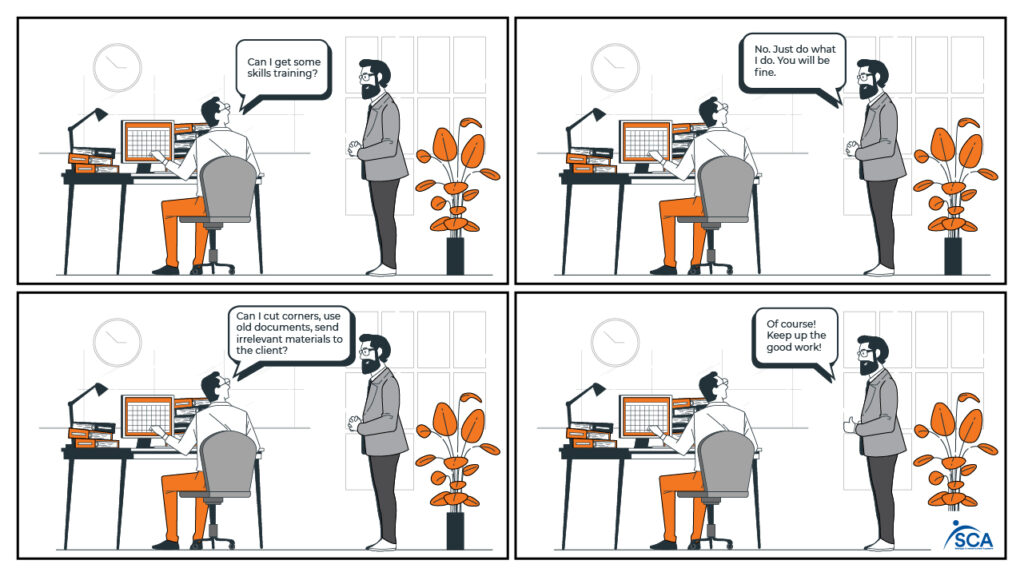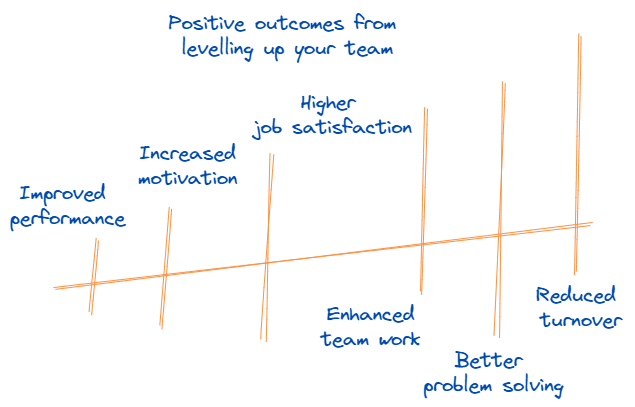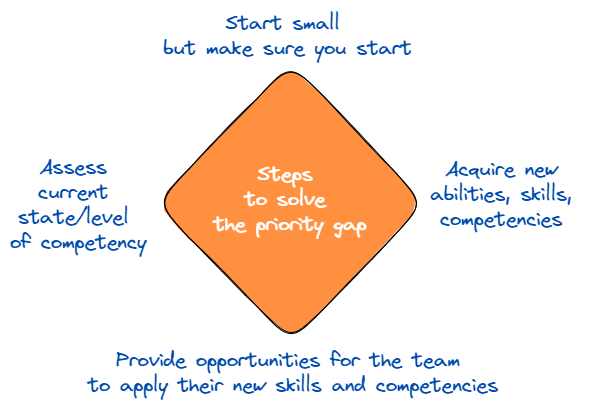The communications and PR discipline, function and team is business-critical for brands and their reputations.
As communicators, we rediscover our value through every single issue and crisis we must deal with (hello pandemic of 2020 – 2022, you were a really fun ride).
Aside from issues and crisis management, our reality is in making sure that our organisation is best served when it comes to identifying trends, providing bridges for cross-function collaboration to happen, and mitigating risk.
The work we do influences customers, supports revenue generation and ensures internal alignment across the organisation.
However, over many days (and routine activities), it becomes very easy to fall into a comfortable routine of reacting and responding to situations and revising execution to map to the level of action required.
Tasks become overwhelming because of the frequency, volume, and intensity.
Personal career goals take a backseat as the needs of the organisation over-ride personal development.
Opportunities pass, and knowledge as well as skill sets diminish over time.
We say we want to develop and nurture our talent.
Leaders recognise and understand that a highly skilled and well-trained team can contribute value across multiple areas for the business – such as revenue, stakeholder/client management, expansion, execution goals.
The ability and confidence to be able to delegate key tasks to self-sufficient team members, and project a successful outcome is a big competition advantage for the business.
To this end, managers spend precious minutes at the end of regular meetings to remind their teams to ‘find time’ for self-learning.
Talent is told to ‘search’ for opportunities in their leader/manager/mentor’s packed schedule for a 15-minute catch-up to share about their learnings from past/current activities.
Team members are encouraged to look at old playbooks, and through osmosis ‘absorb’ the thinking and lessons from it.
Almost like those old martial arts movies, where the young pugilist is able to learn the ‘most powerful thousand hands of Buddha’ move just by reading what is essentially a series of panels in a comic.

And that it makes sense given the difficulty in hiring and retention.
There are numerous challenges with hiring and retention. These include talent shortage, strong competition for the same talent, and concerns around compensation given mixed signals from the economy.
Companies such as Korn Ferry are predicting a more severe talent shortage scenario by 2030, while the current global talent war is already causing concerns in Singapore.
Just a reminder. Employment is a two-way street.
Talent is also evaluating the organisation and they are looking for a positive work environment, a company culture that is aligned to their values, as well as clear career growth opportunities.
Given these challenges, organisations have determined it makes more sense due to the benefits derived from retaining employees.
These benefits include:
- Cost savings: Constant recruitment of new employees lead to high costs (for example, by paying the recruitment company for a successful placemen), training expenses, and lost productivity during the hiring period.
- Increased productivity: Generally, employees gain experience and become more efficient in their roles leading to more productivity.
- Stronger relationships: Long-term employees often build strong relationships with colleagues, clients, and vendors, which can benefit the company in the long run.
- Organisational/institutional knowledge: Employees that have been with the organisation for some time have built up both formal and informal knowledge that can contribute to decision-making and planning
- A positive company culture: The impression given by a low turnover rate makes employees feel more secure; this leads to more investment by them in their roles.
But our actions often seem inconsistent with our words.
Learning and development in the communications and PR industry continues to be under-prioritised.
Communicators are asked to ‘step up’ but not provided with dedicated time, resources or guidance to do so. Management deems those that are unable to find learning resources independently as ‘not proactive’.
The daily grind – project management, providing services to stakeholders/clients, administrative work – are deemed more important and given more priority by managers in their time allocation.
For those fortunate enough to have an L&D function, much of the training revolves around the organisation’s own products or services, and the mandatory ethics and compliance content. The opportunity for communicators to get skill sets and competency training is rare.
This is ironic as many leaders constantly encounter comments and feedback from stakeholders and clients about improving the quality of practice demonstrated by their teams.
Let’s call a spade a spade: Our words and actions are different because we have a prioritisation challenge.
Unfortunately, this is due to the priority gap.
This gap happens when other priorities are ranked more critical (or urgent) than competency building. Of course, revenue, P&L management, negotiations, client/stakeholder management all need to happen. Smart leaders have learnt over time that too much churn or too little movement are both signs to worry about. This further depletes their time across a day or week, pushing other priorities further down the list.
This situation turns out to be a lose-lose for both the leaders and their teams. A competent and self-sufficient team can take on more responsibility and work scope from leaders. Leaders gain back more time to focus on strategy and stakeholders. This seems to be the win-win organisations want, and frequently set as goals for the year.
In reality, leaders struggle to make this happen.
Leaders know it is important to build competency. They do not understand how it helps or relates to succeeding with business goals.
Leaders are waiting for the perfect set of conditions so they can start their team on training.
Leaders find preparing for training difficult and that they are the best (or one of the best) to lead training. This is a problem leaders create for themselves by taking on the mindset that they need to be the lead trainer to make things work out, and they find it a challenge to delegate. The team needs training to level up.
Newsflash. There is no perfect environment. They just need to start. As soon as possible. If they wait for the perfect environment (time, place, leader) to happen, procrastination will sap their motivation.
Sidebar: From a psychology perspective, why do we think and say one thing but do another?
There are several reasons why people may think and say one thing but do another.
The first reason is cognitive dissonance. This occurs when there is a mismatch between a person’s beliefs and behaviors, leading to discomfort or tension. A manager might feel that the stakeholder/client’s requests are much more important than the team’s competency and allocating time meant for work is a negative. Therefore, there is no prioritisation for training.
The next reason is linked to the organisation’s social norms. Employees tend to conform to the norms and expectations of the company, even if they disagree with them. If there is no explicit encouragement of using resources for training, a manager might find it difficult to raise the request for approval.
A possible third reason lies in the emotional state of the manger or decision-maker. Their emotions can influence their behavior, sometimes leading them to act in ways that are inconsistent with their beliefs or values. Perhaps there is concern about revenue or P&L shared by leadership, and management is afraid or worried about what this might mean for their function/unit. This can translate into a preference not to be seen spending on training despite previous support for the activity.
There can be many psychological factors that contribute to inconsistencies between a person’s thoughts, words, and actions. Understanding these factors can help teams, managers and leaders better understand why people may act in seemingly inconsistent ways and work towards addressing these underlying issues.
Here are some logic-based, data points on why you should prioritise levelling up your talent and team.
- Better employee retention: The 2022 LinkedIn Global Talent Trends Report found that employees believe professional development is the number-one way to improve company culture. According to Deloitte, organisations with a strong learning culture have 30 – 50 percent higher engagement and retention rates.
- Increased revenue: A study by the Association for Talent Development found companies that invest in training and development see a 24 percent increase in profit margins compared to those that do not.
- Enhanced job satisfaction: A Udemy survey found that 80 percent of respondents indicated that opportunities to learn new skills would increase their interest and engagement. Specifically, the survey found two-thirds (61%) of respondents who sought professional development on their own feel it keeps them engaged with their work.
- Improved competitiveness: A study found that an engaged workforce improved sales and customer satisfaction. One of the ways to engage a workforce is by providing career progression through training and development.
Here are some critical value-driven outcomes you gain when you choose to level up your talent and team.
In addition to the data points shared earlier, here are some value outcomes a leader/manager gets with a strong, well-trained team:
- Improved performance: Training can improve the skills and knowledge of team members, leading to improved performance in their roles.
- Increased motivation: Providing training opportunities can increase employee engagement and motivation by showing that their employer is invested in their development.
- Higher job satisfaction: When team members feel that they are growing and learning, they may feel more fulfilled and satisfied with their job.
- Enhanced teamwork: Training can provide an opportunity for team members to come together and learn from each other, fostering a more collaborative and cohesive work environment.
- Better problem-solving: Training can equip team members with new tools and techniques for problem-solving, allowing them to approach challenges in a more effective way.
- Reduced turnover: When employees feel that they are developing and growing in their roles, they may be more likely to stay with the organisation long-term, reducing turnover.

How can we solve for this priority gap? Here are 3 steps to begin with.
For a leader to enjoy the assurance, peace of mind and benefits of working with a competent team, they can start by incorporating a learning and development programme in their organisation.
Start small and try it out with smaller teams first.
The point is to start.
The first step is to assess the team on current levels of skills, knowledge and abilities.
- They can be strengths or weaknesses.
- They can point to gaps that need to be filled with new hires, or areas of competencies that can be built up as a core knowledge/service offering.
- The assessment will show where leaders can lean on for help, or need to build for the future, or even to outsource if it is non-core.
The second step is to acquire abilities, competencies, and skill sets. This can be through:
- Learning platforms (such as our Strategic Communications Academy, a cloud-based, on-demand platform to help communicators train on skill sets and competencies)
- Through apprenticeship
- Through a course at an institute of higher learning
The ‘old’ model of on-job-training, observation and shadowing can be part of the process but not be the ONLY process due to the many gaps in context, perspective and understanding.
The third step is critical. There is no point investing in learning and training if there is no sequential application of the new skills, knowledge or competencies.
- Leaders must create opportunities for their team to use what they have learnt and to do so in a progressive manner.
- Progressive means incremental, confidence building alongside measuring progress and outcomes.
- The role of the leader here is to remove obstacles and provide support or resources for the team to apply their skills well.

At this point, leaders will discover new things about team members – whether about their mindsets, motivations, learning styles or even their ability to combine skills. These outcomes should be encouraged and supported – with time, and to connect their levelling up to performance reviews, incentives and their career trajectory within the organisation.
I provide communications and PR solutions for organisations and practitioners through counsel, consultancy and training. With over 20+ years in the industry, I have created frameworks, methods and content that enable you and your team to launch, grow, level up and earn revenue effectively and efficiently.
Here are 3 ways I can help communications, marketing and PR practitioners:
- Digital courses: I run an academy – alongside other trainers – with a focus on levelling up practitioners’ communications and PR skill sets, competencies and personal development by taking their craft to the next level. Training is delivered through a cloud-based learning management platform.
- Group Workshops: We train practitioners in-person on project management, stakeholder/client management, project management and on communications and PR skills such as creating and explaining outcomes, campaign execution, media relations, issues management, and crisis communications.
- Custom LMS: My team builds custom LMS solutions for your learners, providing an interactive platform and adapting your organisation’s specific methodologies into the learning content.
Set up a meeting with us if you are looking for to deliver growth outcomes for your organisation, brand or team.
And subscribe to join over 1,500+ communicators and brands getting value every Tuesday while reading A Communicator’s Perspective, our weekly newsletter.